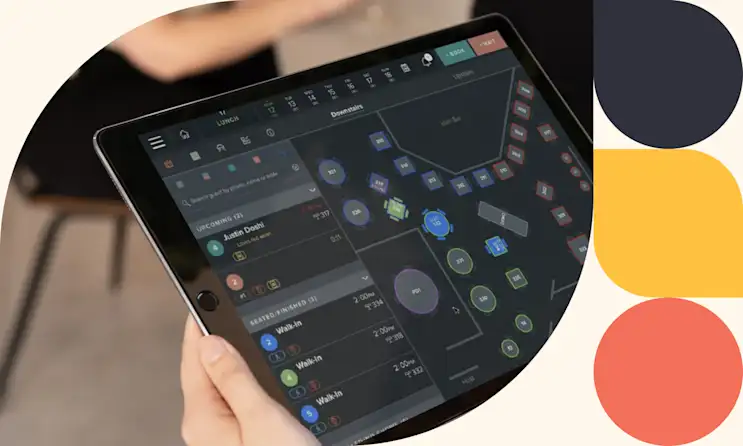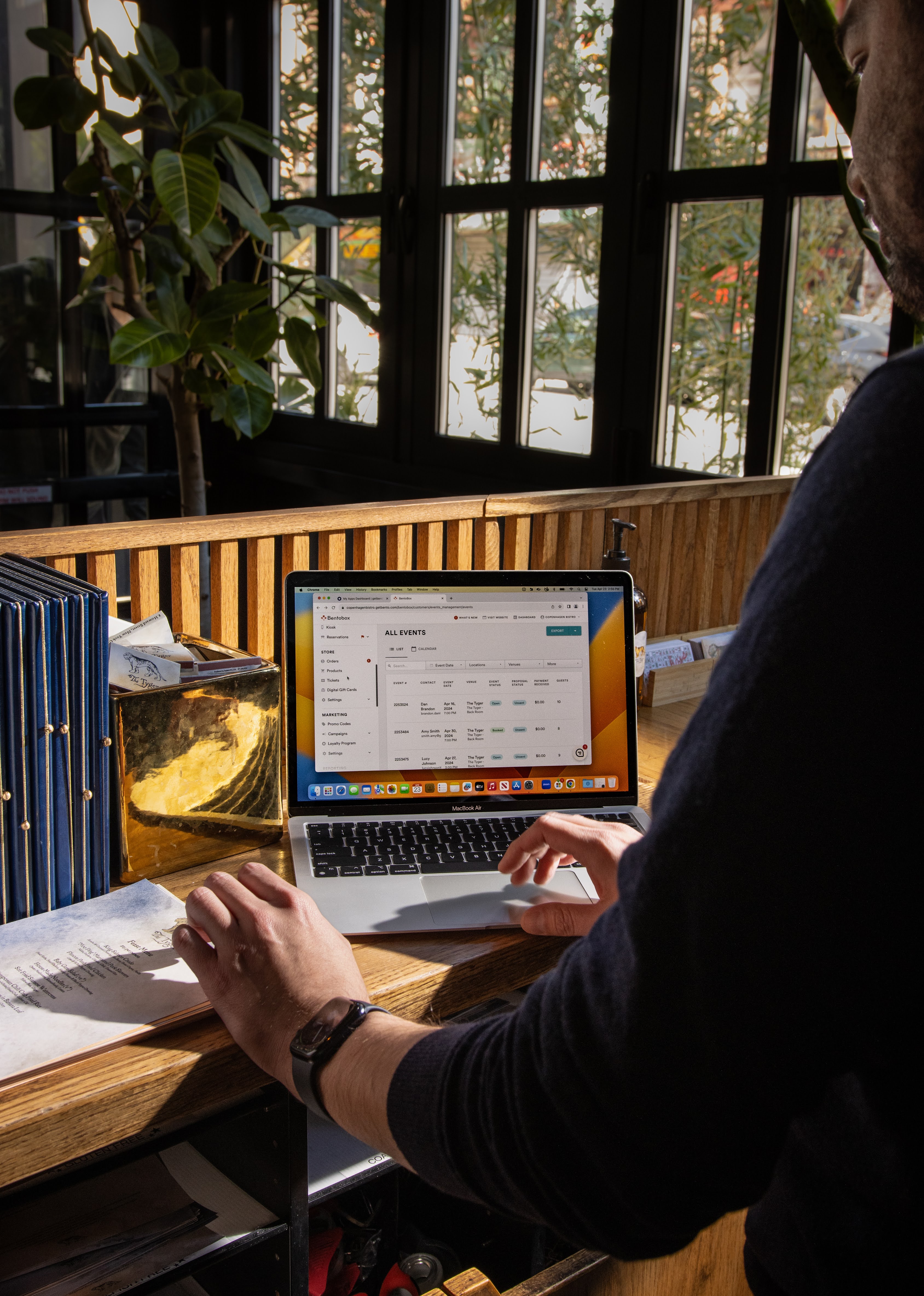Operations
The Ultimate Guide to Restaurant Inventory Management
January 13, 2022
Learn the terms, steps and metrics that aid in the process of this key business process.
Restaurant owners love seeing their business become and stay profitable — and one of the best ways to ensure that happens is through stringent inventory management.
Although it's not the most glamorous task, inventory management helps restaurants avoid waste in the back of the house, which is arguably more critical now than ever before. Restaurateurs consider high operating costs as their biggest challenge, with 86% of restaurants seeing lower profit margins during the ongoing COVID-19 pandemic.
Effective restaurant inventory management helps restaurants meet their financial goals, stay efficient and reduce food waste. This guide covers the terms, numbers and processes a restaurant should know to keep its bottom line healthy.
What is Restaurant Inventory Management?
Restaurant inventory management is the process by which a restaurant monitors and controls the input and output of materials it sells to its customers. This includes all ingredients needed to make every menu item, from salt & pepper to steak tips. It also includes all takeout materials — such as bags and napkins — as well as any merchandise or gifts the restaurant sells like shirts or glasses. Through careful ordering, organization and communication, inventory management can save a restaurant thousands of dollars every year.
The Benefits of Proper Inventory Management
Inventory management keeps a restaurant profitable, which keeps its doors open. Consider a restaurant that has a 15% food cost variance — meaning 15% of ingredients it orders are either stolen, wasted or not charged for. This restaurant’s food cost target is 30%, but with such high variance, food cost is actually closer to 35%.
If that restaurant could lower variance to just 10%, that extra 5% would be accounted for and benefit the restaurant’s profit margin. Assuming this restaurant did $1,000,000 in annual sales, that would equate to $15,000 over the course of the year.
Plus, poor inventory management can contribute to a dangerous culture in a restaurant’s staff. The idea that food costs don’t matter can increase the likelihood of cooks failing to report order mistakes, serving inconsistent portion sizes or even stealing from the restaurant by eating or giving away food. Stressing the value of every ingredient that enters the kitchen lowers the risk of food ending up anywhere besides a customer’s plate.
Better inventory management also creates a better guest experience. Guests can expect consistency each time they order from a restaurant knowing portion sizes won’t fluctuate and their favorite menu item won’t be sold out. This customer-first mentality benefits the restaurant’s bottom line by keeping guests satisfied and encouraging repeat visits.
Ultimately, inventory management is about reducing waste as much as possible — not necessarily eradicating it. There will always be inaccurate measurements, waste and overordering. Inventory management simply ensures as little waste occurs as possible. For example, if a restaurant over orders and needs to offload excess inventory, it can sell ingredients like rolls, sauces and pantry items direct-to-consumer through online ordering on its website.
How to Calculate Inventory Variance
Inventory variance is the difference between how much the restaurant spent on inventory and how much inventory the restaurant can record as sold.
Without calculating variance, a restaurant can’t know whether its inventory management is accurate. Comparing the input to the output helps identify the severity of any discrepancy, determine the cause of the issue(s) and implement techniques to lower and control that variance.
Only two numbers are needed to calculate inventory variance.
Cost of Goods Sold (COGS): The cost of inventory utilized in a given time period.
Inventory Usage: The cost of depleted inventory in the same time period.
The formula breaks down as follows:
Inventory Variance = Cost of Goods Sold – Inventory Usage
For example, a restaurant’s cost of goods sold for the month of May is $30,000, and its inventory usage totals $33,000. This would yield an inventory variance of -$3,000, meaning the restaurant used $3,000 more in inventory than it should have.
To determine variance as a percentage, simply divide the raw number by the usage number.
Inventory Variance Percentage = (Inventory Variance ÷ Usage) x 100
In the example above, this would mean dividing -$3,000 by $33,000, resulting in a -9.1% inventory variance percentage.
From there, a restaurant can also break its variance down by menu section — or menu item, if the situation calls for it — to identify what the biggest culprits in variance are. If, say, the restaurant above found that its variance for pasta was only -5% but for steak was -15%, it should put an emphasis on reducing the waste of steak in the kitchen. This might look like quality checks to ensure orders aren’t sent back and ensuring 8 oz steaks aren’t actually weighing in at 8.5 oz every time. Plus, as steak is an expensive ingredient, variance on that menu item can have a larger impact on the restaurant’s overall variance.
Tracking variance cumulatively and for a specific time period shows if a restaurant’s inventory management is stable and/or improving. In the example above, the restaurant might follow its -9.1% variance in May with a -4.5% variance in June. This would be a huge improvement and put the restaurant on track for a stronger bottom line, but there’s still work to do to make up for the months like May, where the higher variance puts the restaurant’s overall profitability at risk.

PRODUCT
Need more efficient operations?
Streamline processes by integrating all your tools – from front of house to back of house and everything in between.
How to Manage Inventory in a Restaurant
The importance of inventory management might suggest that the process itself is difficult, or even exhausting. Fortunately, that’s not the case. Restaurant inventory can be managed efficiently with the right tools and processes, which help restaurants quickly resolve major inventory issues as soon as they arise.
Here are six simple steps towards smarter, easier restaurant inventory management.
1. Use the Right Technology
When it comes to inventory management, restaurant inventory software is one of the smartest investments a restaurant can make. These softwares can integrate with a POS and ordering software to compare expected usage with actual usage, enabling managers to quickly follow up on the cause of any error.
Additionally, inventory management software often syncs with inventory ordering — which makes communicating with vendors simpler and faster than ever.
Popular inventory software like Restaurant365 benefits restaurants by streamlining their inventory operations, while bar-specific inventory software like Backbar and Bevspot are good options for bars.
Key features to look for in restaurant inventory software include:
Menu engineering tools to identify menu item profitability.
Automatic food cost variance calculation.
Integrations with POS software and food vendors.
Recipe costing to keep food costs low where possible.
2. Choose an Inventory Costing Method
An inventory costing method is how a business plans to move through inventory. In restaurants, the most common method is First In, First Out — aka FIFO. This method requires any inventory that comes to the restaurant first to be sold first. FIFO ensures ingredients are used while they are fresh — otherwise, a backlog of unusable food would build up in the kitchen.
However, when it comes to gifts and merchandise, restaurants may want to invert this and use Last In, First Out, where newer inventory is sold first. This allows them to display the most recent designs of glassware, t-shirts and other restaurant swag.
3. Set Par Levels and Emergency Reserves
Setting par levels is a core step of inventory management. Par refers to the “normal” inventory levels a restaurant wants going into each shift. Because demand fluctuates, so do par levels. It’s up to the restaurant to set par levels based on forecasts for a given day or series of days; otherwise, inventory may expire or run out.
As a safety net, restaurants typically set aside an emergency reserve of inventory for must-have ingredients. While forecasting is helpful, it’s not infallible, and the last thing a restaurant needs is to 86 several items after a series of big orders. Inventory reserves should be substantial enough to get through an unexpected surge, but not so substantial that food remains in the kitchen for too long.
Restaurants can also use technology to build sales forecasts and par levels for each menu item. While a par inventory sheet through Excel can do the trick, aforementioned inventory management software can be used to automatically set and adjust par levels based on calculated sales projections.
4. Hold Staff Accountable
At the end of the day, inventory management is in the hands of restaurant employees. While management sets the rules and protocols, staff need to adhere to them.
As part of their new hire training, employees should be briefed on the following:
Portion control. Overportioning is a frequent cause of inventory variance. Staff should know how to measure portions of everything — especially the most costly ingredients.
Meal comp rules. Many restaurants allow employees to get the occasional free meal, and may even offer a family and friends discount. However, these instances should be recorded so that management can account for them when measuring inventory and setting menu prices.
Reporting waste. Spills occur. Mistakes are made. Some ingredients can’t be served. Inevitably, food gets wasted in restaurant kitchens. However, cooks should know to record these mishaps so they can track where inventory is going. Additionally, staff should know to alert vendors when supplies are bad, ensuring those orders are replaced or refunded.
Theft ramifications. Staff should be informed that inventory theft is not tolerated in any way and explicitly warned of the consequences.
5. Check Inventory Reports Frequently
A restaurant can’t know if its inventory management program is working unless it is subject to periodic review.
Managers and owners need to prioritize reviewing inventory on a regular basis to ensure variance stays under control. Experienced restaurants with a good grasp on inventory may only need to audit the process once or twice a week. However, new restaurants or restaurants striving to control their variance may benefit from checking these reports daily.
To streamline these checks, many restaurant inventory software solutions provide real-time visibility into important metrics, making these inventory checks instant and easy.
6. Make Optimizations
Finally, a restaurant’s inventory management almost always has room for improvement. If variance is increasing and profits are decreasing, it may be time to make some optimizations in the way inventory is handled.
Here are some quick and effective ways to control a restaurant’s inventory variance.
Audit food waste. Often the first culprit, food waste adds up quickly — but it can immediately be addressed by pre-portioning ingredients and holding staff accountable. It’s also worth looking into which ingredients or dishes contribute the most to waste and have the highest inventory variance. For example, 5% of shredded lettuce ending up on the floor or in the trash might not break the bank, but 5% of shredded cheese might.
Adjust par levels. Par levels can shift over time as a result of seasonality or fluctuating demand. Failing to revisit par levels may cause some food to stock up too quickly, resulting in a waste of ingredients and profits. Being more diligent with par levels is a responsive way to keep the kitchen efficient and the bottom line stronger.
Retrain staff. Sometimes, staff simply need a refresher about portion control, measurement and noting when spills and waste occur. In the heat of a Friday night dinner shift, adhering to the exact amount of rice pilaf may not be top of mind for cooks. In this case, a simple refresher on portioning tools and the importance of adhering to inventory levels can work wonders. Staff should also have a clear way to report when mistakes or waste occurs that doesn’t take up too much of their time.
Engineer the menu. To optimize a menu for profitability, restaurants engage in the task of menu engineering. As part of this task, restaurants analyze the money made from menu items and make adjustments if needed. For example, a highly popular menu item might be being sold for too little — and menu engineering would help identify a more ideal and profitable price point to target.
Keeping an Eye on Inventory
While not the most exhilarating part of running a restaurant, inventory management is an essential practice for staying profitable, avoiding food waste and keeping a restaurant’s bottom line strong. Without it, restaurants have no certainty in where their ingredients — or their profits — are going.
With the proper guidance, tools and technology, employees and managers will find that inventory management is surprisingly simple and see the financial benefits pay off almost immediately. Plus, with restaurant inventory management technology, restaurateurs can spend less time worrying about tracking food and more time ensuring their guests have an unbeatable experience.

BentoBox Marketing & Commerce Platform
Deliver Smarter Hospitality
Want to stand out online, bring in more money, engage your diners, and streamline operations?
Recommended

Operations
10 Types of Restaurant Technology You Need in 2024
March 29, 2023
Your guide to picking the right tools that will support your restaurant's growth.

Operations
How To Run a Profitable Restaurant
January 27, 2022
To run a profitable business, restaurants need to calculate their profit margin and know how to improve it.

Operations
8 Key Restaurant Benchmarks To Know
April 6, 2022
To measure success, your restaurant needs clearly defined goals. Use these key metrics to guide the way.


